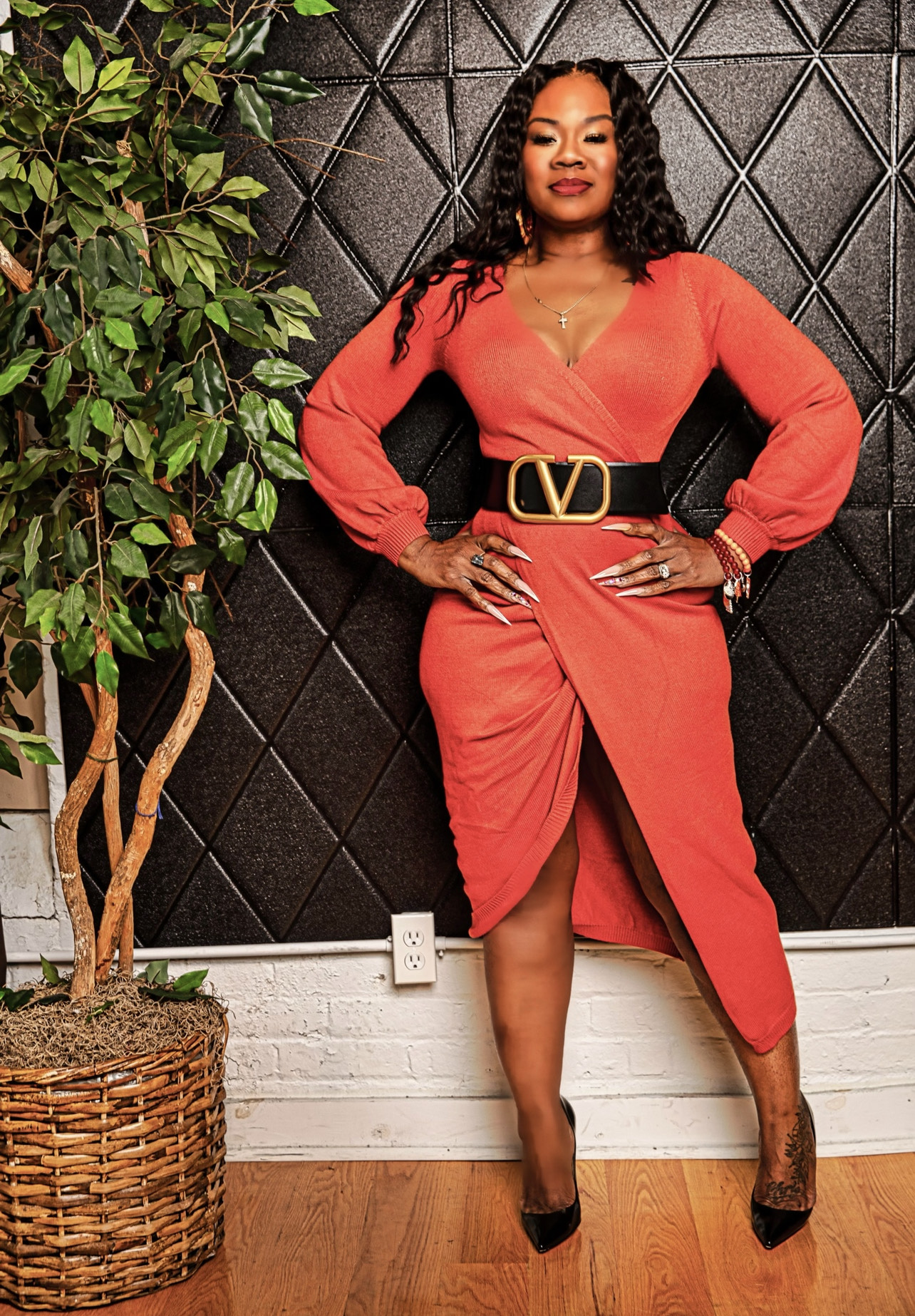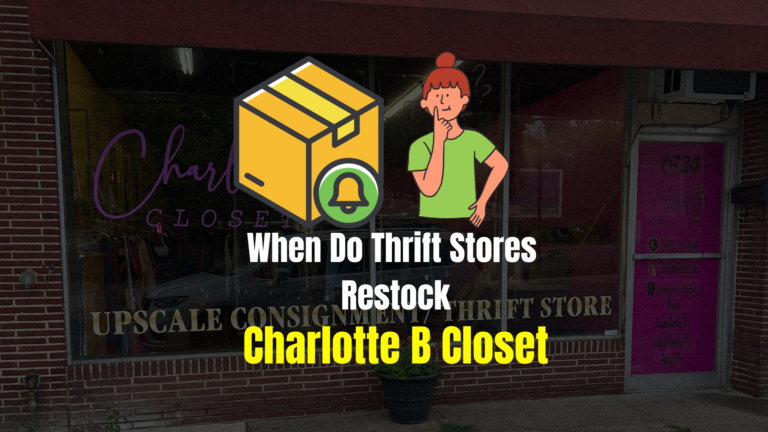Are Thrift Store Clothes Clean? – Make Thrift Store Clothes Clean
Thrift shopping has taken the fashion world by storm, offering sustainable and wallet-friendly alternatives to fast fashion.
However, amidst the thrill of finding unique pieces, a nagging question often arises: are thrift store clothes clean?
While many thrift stores don’t wash clothes before displaying, it’s essential to recognize that many donations might be cleaned before being given. Regardless, it’s always a prudent choice to wash your thrifted items once at home, as numerous individuals might have handled or tried them on.
Are Thrift Store Clothes Clean? – A Quick Guide
Venturing into the world of thrift shopping is akin to embarking on a treasure hunt. Yet, amidst the excitement, the question of cleanliness often looms large. While it’s true that some thrift stores may not wash every piece of clothing they receive, this doesn’t mean all thrifted items are unclean. Many donations are washed before they reach the store. However, given the nature of these shops where numerous shoppers might try on or handle the clothes, it’s always wise to wash your new finds once you bring them home. Adopting a careful approach ensures that your thrifted items are not only stylish but also clean and safe to wear.
How to Know if Thrift Store Clothes are Clean or Not?
Thrifting has become more than just a trend; it’s a lifestyle choice for many. But as you sift through racks of pre-loved garments, there’s a lingering question: are these clothes clean? To help you navigate the world of thrift shopping with confidence, we’ve compiled a comprehensive guide on determining the cleanliness of thrift store finds.
The Importance of Determining Cleanliness
Understanding the state of cleanliness of thrifted items is not just about avoiding potential skin irritations or allergic reactions. It’s also about ensuring you’re not bringing unwanted pests, like bed bugs, or lingering bacteria into your home. A clear assessment can give you peace of mind and make your thrifting experience more enjoyable.
Visual Inspection: A First Line of Defense
Before anything else, use your eyes. A visual assessment is often the first indicator of an item’s cleanliness. Look for obvious stains, discolorations, or any marks. While some signs of wear are to be expected with second-hand items, fresh stains or noticeable dirt can be immediate red flags.
The Revealing Smell Test: Trusting Your Nose
Sometimes, your sense of smell can be more revealing than sight. Take a moment to sniff the garment. A fresh laundry scent might suggest the item was cleaned before being put up for sale. However, a musty, stale, or strong odor could be indicative of prolonged storage or lack of cleaning. It’s essential to trust your instincts here; if something smells off, it probably is.
Label Check: The Direct Indication
While not as common, some thrift stores are proactive in their approach to inform customers. They might attach labels to clothing, indicating whether they have been ‘washed’ or ‘unwashed.’ These indicators, though simple, can be invaluable in determining if an immediate wash is needed or if it’s safe to wear right away.
Engaging with Store Staff: Inquire and Learn
Never underestimate the value of direct communication. If you’re unsure about an item’s cleanliness, ask the store staff. Most employees or volunteers are well-aware of the store’s cleaning procedures and can provide insight. This direct inquiry not only clears your doubts but also gives you a broader understanding of the store’s overall hygiene practices.
How to Clean Thrift Store Clothes?
Thrift shopping is not just an eco-friendly choice, but also a treasure hunt of sorts. However, once you’ve found that perfect vintage jacket or those barely-worn designer jeans, the next step is to ensure they’re perfectly clean and safe to wear. Here’s a comprehensive guide on cleaning and caring for your thrifted gems.
Initial Precautions: Quarantine Before Cleaning
Before diving into the cleaning process, it’s a wise idea to isolate your thrifted finds from your regular wardrobe. This practice ensures that any potential contaminants, pests, or allergens don’t find their way to your other clothes. A temporary storage bag or a separate laundry basket can be handy for this purpose.
Understanding Fabric Needs: The Care Label Guide
The care label on clothing is a treasure trove of information. Before washing, always check this label. It provides essential guidelines on water temperature, washing cycle, and drying methods suited for the fabric. Following these instructions ensures your thrifted item remains in prime condition and lasts longer.
Washing Protocols: From Machine Wash to Hand Wash
While sturdy fabrics like cotton and denim can endure regular machine wash cycles, delicate materials like silk, lace, or wool might need a gentler approach. For these, a hand wash with cold water using a mild detergent is ideal. Remember, it’s always better to err on the side of caution. If unsure about a fabric’s resilience, opt for a hand wash.
Drying Techniques: Air Dry vs. Tumble Dry
Once washed, drying your clothes correctly is equally crucial. While many items can be tumble dried, some fabrics benefit from air drying. Especially for vintage or delicate items, laying them flat on a clean towel to dry naturally helps maintain their shape and integrity.
Tips to Get Rid of Thrift Store Smell from Clothes
That unique ‘thrift store smell’ is something every second-hand shopper is familiar with. While not necessarily indicative of dirt or grime, it can be off-putting. Here’s how to ensure your thrifted clothes smell as fabulous as they look.
Natural Odor Busters: Home Remedies
Several household items can work wonders in removing unwanted odors. Baking soda is a natural deodorizer. Adding a cup to your wash cycle can help neutralize smells. Similarly, white vinegar can be used as a fabric softener substitute. Its acidic nature breaks down odor-causing residues. Lastly, simply hanging your clothes out in the sunlight can also help in odor elimination.
Commercial Solutions: Specially Designed Fresheners
For particularly stubborn smells, turning to commercial solutions might be necessary. Odor-removing sprays or detergents specifically designed to tackle strong odors can be effective. Brands like Febreze or OdorKlenz have products that can refresh your clothes, giving them a clean and pleasant scent.
Storage Matters: Preventing Future Odors
How you store your clothes post-cleaning can play a pivotal role in odor prevention. Ensure your wardrobe or storage space is dry and well-ventilated. Moisture is often a culprit behind musty smells. Using silica gel packets in your drawers or incorporating cedar balls can help absorb moisture and keep your clothes smelling fresh.
Conclusion
Thrift shopping offers a unique blend of sustainability, style, and savings. However, ensuring the cleanliness of your thrifted treasures is paramount. With the right care, attention, and knowledge, you can confidently wear your second-hand finds, knowing they’re as clean as they are chic. By understanding thrift store practices and adopting effective cleaning techniques, every thrifted garment can feel as good as new.
FAQs
Do thrift stores sanitize clothes before selling them?
While some thrift stores sanitize donations before displaying, many rely on donors to clean items beforehand. Always check store policies or wash purchases at home for assurance.
Is there a risk of pests like bed bugs in thrifted clothes?
There’s a minimal risk of pests in thrifted items, similar to new retail purchases. However, it’s advisable to wash and dry thrifted clothes at high temperatures upon purchase.
How can I ensure my thrifted clothes are allergen-free?
To reduce allergens, wash thrifted clothes in hot water with hypoallergenic detergent and dry thoroughly, preferably in direct sunlight.
Are thrift store clothes’ smells an indicator of cleanliness?
Not necessarily. The distinct ‘thrift store smell’ can be due to prolonged storage, not dirt. Washing and airing out usually removes this odor.

Hi there, I’m Toni Whitten, but you might know me as LadyT. I’m a passionate entrepreneur and the proud owner of Charlotte B’s Closet, your go-to thrift store and upscale consignment.
Outside the store, I connect with the amazing women in my exclusive Facebook group, Housewives of Baltimore, boasting over 23k+ members.
In my free moments, I channel my passion for sharing genuine insights and helpful guides on various concerns through my blog at charlottebcloset.com.







